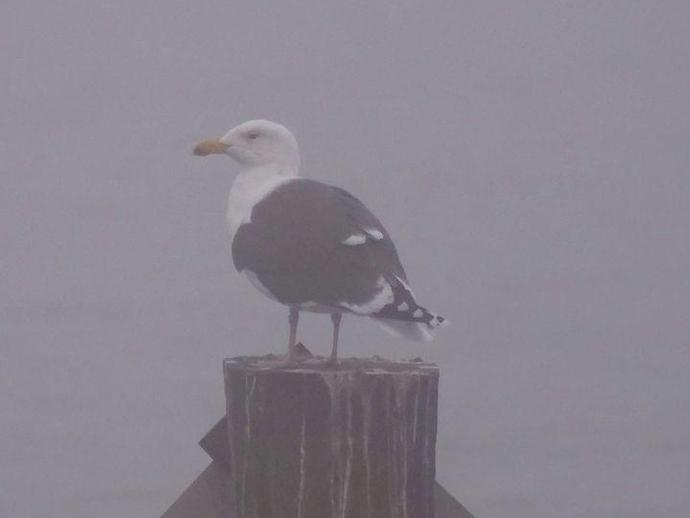January 25, 2022
Ben here with the Tuesday edition of #BenInNature presented by our friends at Carter Bank & Trust!
As I mentioned yesterday, I was in Norfolk a couple of weeks ago and photographed some shorebirds early one foggy morning. Today we're looking at the second one I spotted, the great black-backed gull (Larus marinus), the largest gull in the world!
The Cornell Lab of Ornithology describes this bird as "the king of the Atlantic waterfront." Personally, I thought that title belonged to Bally's Atlantic City Casino, but I suppose this majestic seagull also deserves the title. A full-size black-backed gull can have a wingspan of nearly six feet and weigh as much as five pounds!
The great black-backed gull has a wide range and can be found up and down the Atlantic coast, along the northern European coast, and on shorelines between those two points. Much like the ring-billed gull we looked at yesterday, these birds are opportunists and will eat just about anything they can fit in their mouths. They eat plenty of fish, but they also eat a great deal of garbage that's been helpfully provided by us humans.
Interestingly, these gulls are one of the few species that are highly predatory, and they will hunt and kill small prey. Since they lack the sharp beaks and pointy talons of hawks, eagles, and other birds of prey, they instead kill their quarry through their sheer strength and aggression.
Also like the ring-billed gull we looked at yesterday, these gulls were once harvested for their feathers. Fortunately, they're resilient birds and their populations have managed to bounce back, making them a common sight on the Atlantic coast.
ABOUT #BenInNature
Social distancing can be difficult, but it presents a great opportunity to become reacquainted with nature. In this series of posts, Administrator of Science Ben Williams ventures outdoors to record a snapshot of the unique sights that can be found in the natural world. New updates are posted Monday - Friday, with previous posts highlighted on the weekends. This series of posts is made possible thanks to the support of VMNH Corporate Partner Carter Bank & Trust (www.cbtcares.com).
NATURE PHOTO IDENTIFICATIONS
If you discover something in nature that you would like help identifying, be sure to message us right here on Facebook with a picture (please include location and date of picture) and we'll have our experts help you identify it!

 Hours & Admissions
Hours & Admissions Directions
Directions

